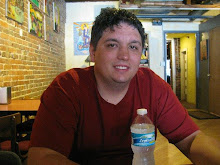Whenever I can I try to have a house "white" for preaching and a house "color" for worship. This way the audience is lit with the same cool looking lights that are used to light the folks on stage.
Also if you are doing any form of TV lighting and want shots of the crowd worshiping, you won't be able to get those shots with brown audience lights or no house lights.
The first pic is an audience color wash from New Life with 12 source 4 narrows and 6 par 64 1k blue on top of all that. I will re-gel every quarter or to match sermon graphics. Also, (you can't see from these photos) there are 6 1k med blues from a midstage catwalk (pretty high) shooting at the altar area of the stage. This allows our hand held operators to take shots from the stage into the altar where people are usually hanging out.


The second scenerio is a portable rig with 10 led pars shot ABOVE the crowds heads. Looks great in haze and includes the audience into the various stage looks. I keep them on most of the time or I will go to a super dark congo or red when I want to make it intimate.

If you are using LEDs, being able to change your crowd lights to match your scenery is amazing. There is a lot of talk about creating the "ideal" environment for people to experience God. What better way than to make the house match the stage and include the people into the worship environment instead of keeping them in the black and creating a separation with (a lack of) light.
On a side note.... blinding the audience:

I am NOT into shooting lights right into the audiences eyes constantly in a worship environment. I know that every major worship dvd out there features copious amounts of 32k pars pointed right at the audience - and that is cool, because it is a DVD shoot, not a week to week worship service. House lights need to be above the crowd not in their eyes, blinders are cool every once in a while, but never continuous. If you have movers and you want them to fly around the house, be my guest, its cool, keep in mind that having a 56k arc lamp parked in your eyes hurts, even if you have blue or a breakup in the beam, leds in the eyes hurt just as much, and blinders [also refered in the concert industry as audience abuse lights] hurts.






























